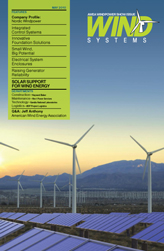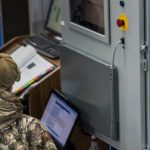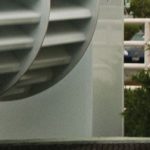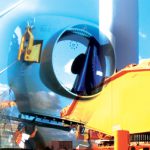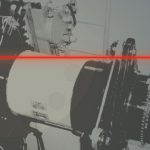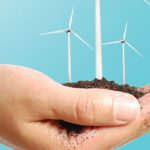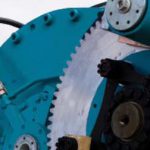Although wind’s power has been harnessed for thousands of years, the demand for green, alternative energy in the United States has spurred significant growth in the wind industry over the last decade, and particularly the last five years. The American Wind Energy Association (AWEA) reports that tower construction in 2009 surpassed all previous years with over 9,900 MW installed, bringing the total power contributed by wind in the U.S. to more than 35,000 MW.
The push for more-efficient towers with increased power generating capacity is driving tower dimensions to new heights. Turbine manufacturers have developed towers with more than 5 MW capacity and exceeding 125m in height. While the larger turbines provide more capacity, engineering and construction of cost-effective foundations for these towers becomes an increasing challenge.
Solid Support
Turbine foundation design considers traditional geotechnical engineering analyses for bearing capacity and settlement for static dead and live loading conditions much like conventional building foundation support. More importantly, though, the designs are often controlled by large transient pressures attributed to significant overturning moments from mean and critical wind characteristics applied to the turbine foundation. The geotechnical and foundation design must also provide stiffness characteristics of the foundation soils for acceptable tower performance under the wind gust loading conditions. Most manufacturers specify horizontal and dynamic (rotational) stiffness criteria specific to the particular of tower type that must be met.
Designers, contractors, and owners must weigh a variety of different foundation support solutions for their towers based on performance, cost, and speed of construction. Priding themselves on being part of the green movement, designers also seek to provide sustainable solutions for projects. These decisions are often simplified when the ground conditions allow for large turbines to be supported on shallow concrete mat foundations bearing on competent soils or rock. Shallow foundations—often hexagonal or octagonal in shape—provide significant economy and speed of construction in these cases. In addition to meeting performance requirements this approach is often a relatively sustainable construction method as well, because it avoids the increased carbon footprints and other detrimental environmental impacts often associated with more-elaborate foundation support solutions.
Unfortunately, many tower sites are characterized by weak or soft soils that do not provide sufficient support for the high applied pressures or meet the foundation settlement or stiffness requirements. Design teams must consider alternative support solutions including massive grading operations to remove and replace the unsuitable soil, installing deep foundations to bear on competent soils or improving the existing poor soils.
Deep Foundations
The process of massive removal (overexcavation) of the poor soil and replacement in thin, controlled lifts with high-quality engineered aggregate (similar to roadway or building construction) is a desirable and cost-effective solution when the depth of poor soils is limited to only a few feet below the foundation bearing elevation. Tower foundations may be designed as large mat foundations, the same as those supported on competent soils. The overexcavation process becomes more complicated when poor soils extend deeper below the foundations, or shallow groundwater results in the need for dewatering of the excavation. These conditions not only adversely affect the economics, but also the construction schedule. From a sustainability perspective, the earthwork operation uses locally occurring, natural materials to create the engineered bearing layer. The carbon footprint of the construction activities begins to add up, however, when considering transportation of both the engineered material and the poor soils removed, as well as the large earthmoving construction activity.
Deep foundation support is typically used when poor soils extend to considerable depths below foundations. Deep foundations—such as driven piles made from timber, concrete, or steel, drilled concrete shafts, or grouted auger-cast-in-place piles—are used to transfer tower foundation loads through soft, compressible soils to bear on competent soil or rock. It is common for deep foundations to be used to treat sites with soft soils extending more than 50 or 100 feet in depth.
Although the geotechnical and structural design of the piles and foundation may be more intensive, the deep foundation system will provide superior performance for settlement and bearing. The superior performance comes at a high cost, both financially and environmentally. Besides the initial high material cost, pile-supported tower foundations may result in longer construction schedules, often related to slow installation of the piles, delays in material fabrication, or delivery to remote sites. Steel pile foundations incorporate energy- and resource-depleting manufactured materials such as steel or concrete. Piles typically utilize material that is manufactured or fabricated at locations hundreds or even thousands of miles away. Although local, concrete production is also energy intensive and ozone depleting. The combination of the energy-intensive manufacturing process and the significant transportation efforts required for deep foundations to arrive at the site increase the carbon footprint of the foundation solution, adversely impacting the sustainability of the solution.
Reliable Reinforcements
A trend that has continued to grow with the wind industry is the use of soil reinforcement to improve the existing poor soils to support shallow turbine foundations. Soil reinforcement approaches attempt to balance the critical factors of cost, performance, ease of construction, and environmental sustainability that could control the success of the project. Figure 2
Soil reinforcement for tower support using Rammed Aggregate Pier® (RAP) systems designed by the Geopier Foundation Company have continued to gain momentum and provide value on wind projects. Intermediate foundation solutions using RAP systems have provided building foundation support in the commercial, industrial, manufacturing, and power markets for over two decades. The same soil reinforcement technology has been supporting turbines in Europe for over a decade and it is now commonly used to provide improved strength and stiffness of soft or compressible soils, eliminating the need for massive overexcavation and replacement and deep foundations for the support of wind turbine foundations in the U.S.
Installation of RAP elements (also known as Geopier® or Impact® elements) involves drilling a 24- to 36-inch diameter cavity or driving a specially designed hollow mandrel to design depths ranging from 10 to 40 feet, depending on design requirements. Thin lifts of aggregate are then placed within the cavity and vertically rammed using high-energy patented beveled impact tamping devices.
During construction the high-frequency energy delivered by the modified hydraulic hammer, combined with the beveled shape of the tamper, not only densifies the aggregate vertically to create a stiff aggregate pier but also forces aggregate laterally into the sidewall of the hole, resulting in lateral stress increase in surrounding soil. The lateral stress increase reduces the compressibility of the surrounding soil and promotes positive coupling of the RAP element and the soil to create an improved composite, reinforced soil zone.
RAP systems are designed to reinforce the poor foundation soils and provide adequate bearing support for the large foundation pressures. The soil reinforcement system is also specifically designed to deliver total and differential settlement control (angular distortion) of the foundations, and to improve the rotational and dynamic stiffness values to achieve the desired tower performance. The soil reinforcement designs are developed on a project-specific basis depending on the site conditions and the tower loading conditions.
The system utilizes locally available natural aggregate, or even recycled concrete for pier construction. In addition, the volume of material utilized for Geopier elements beneath the foundation is typically only 10 to 20 percent of the material required for massive overexcavation and replacement. These factors limit excessive fossil fuel required for material delivery and disposal, as compared to other solutions. The use of small, mobile excavators further limits the fossil fuel consumption and dramatically reduces the carbon footprint of the foundation construction activities, making the RAP solution a uniquely sustainable solution for the wind industry.
Team Approach
One such project that incorporated the Rammed Aggregate Pier solution was the Winnebago 1 Wind Farm in Winnebago County, Iowa. The project incorporated 78 meter Gamesa G83 2.0 MW wind turbines with static vertical loads of 2,936 kN (660 kips), horizontal base shear of 676 kN (152 kips), and overturning moments of 50,335 kN-m (37,120 ft-kips).
Soil conditions at the tower locations explored by geotechnical engineering consultant Terracon Consultants with supplemental borings provided by Barr Engineering Company showed variable-strength clay soils extending to depths of up to 18 feet, followed by competent soils. Combined with a groundwater level as high as 5 feet below the ground, the overexcavation alternative was expected to be costly and time consuming. Figure 3
At the recommendation of the project geotechnical engineer, the project team—led by Iberdrola Engineering and Construction—elected to incorporate a RAP foundation system to support the “inverted tee” octagonal foundations. The system was designed to improve the bearing support, to control settlement, and to provide acceptable levels of rotational and dynamic stiffness values. The 2.5-ft diameter piers ranged from 7 to 15 feet in length depending on the site conditions. To get the wind turbine towers up and running, Peterson Contractors installed 640 RAP elements in less than one month as they moved from site to site. The rapid installations allowed the sites to be quickly turned over for foundation construction with little time delay.
Performance of the RAP system was verified in the field using quality control observations and testing, including full-scale modulus load testing. The modulus load testing is performed to evaluate the stress-deflection behavior (stiffness) of the pier and verify the performance under the design stress levels. The system performed well, with less than 0.2 inches of pier deflection at a stress of over 18,000 psf; a pressure over four times the maximum applied pressure from the foundation.
Conclusion
Engineers, owners, and contractors continue to search for the most cost-effective and reliable support solutions for tower foundations. The balance of cost, speed of construction, quality, sustainability, and performance are paramount in the decision process. With over 1,000 MW of towers supported, the use of Rammed Aggregate Pier soil reinforcement solutions has helped maintain the proper balance for many project teams.



















